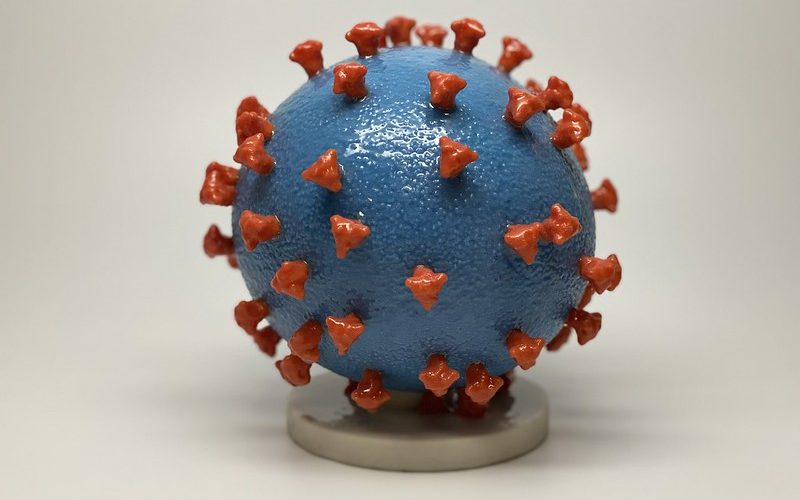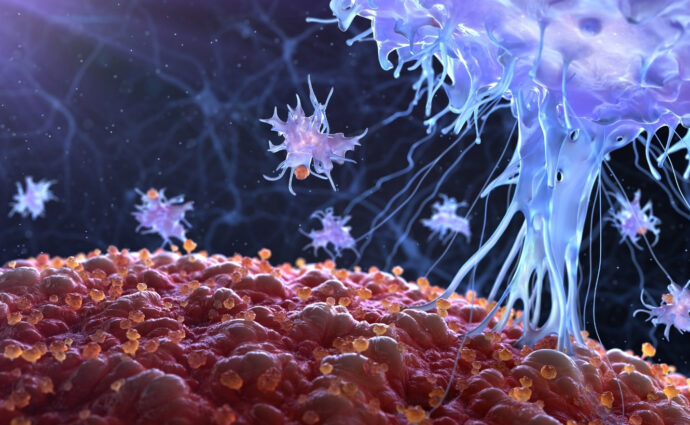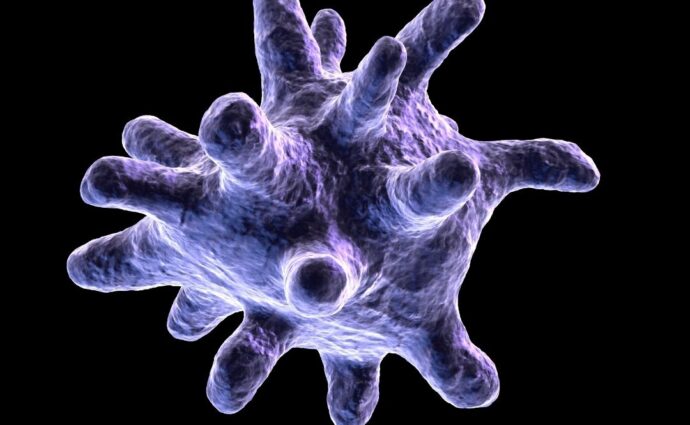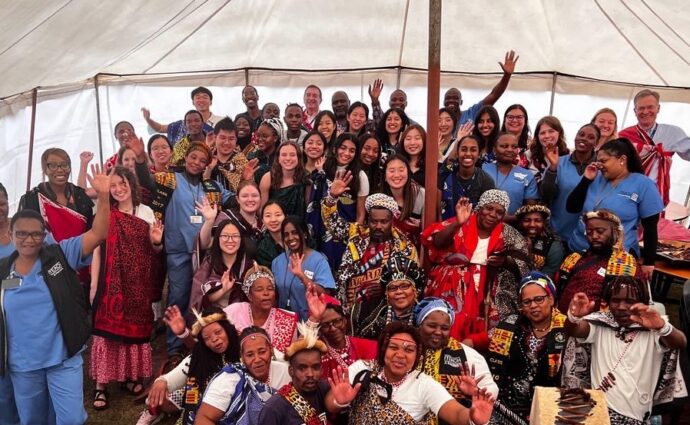Date: December 4, 2020 By:

Image Credit: Novel Coronavirus SARS-CoV-2, NIH
COVID-19 vaccines are on the near horizon, but many questions on COVID-19 immunity remain for researchers to answer as they work to combat the global pandemic.
One major goal is to develop a detailed understanding of what a protective immune response to SARS-CoV-2, the virus that causes COVID-19, looks like. The markers that indicate a strong and successful response are known as “immune correlates of protection,” and can provide valuable information about how to define and induce a protective immune response.
Ragon Steering Committee Member Dan Barouch, MD, PhD, of Beth Israel Deaconess Medical Center, where he serves as Director of BIDMC’s Center for Virology and Vaccine Research, along with Ragon Core Member Galit Alter, PhD, recently published a paper in Nature, entitled “Correlates of protection against SARS-CoV-2 in rhesus macaques.”
“We define the role of antibodies versus T cells in protection against COVID-19 in monkeys. We report that a relatively low antibody titer (the concentration of antibodies in the blood) is needed for protection,” said Barouch, the lead author on the study. “Such knowledge will be important in the development of next generation vaccines, antibody-based therapeutics, and public health strategies for COVID-19.”
The research team first gave antibodies from monkeys that had had COVID-19 to monkeys that had not. They found that monkeys who received higher doses of COVID-19 antibodies were more protected against the disease when they were exposed to it, but that a relatively low amount of antibodies could provide protection against the disease. In a similar experiment, animals that were actively infected with COVID-19 were able to suppress the infection faster when treated with larger amounts of COVID-19 antibodies compared to smaller amounts.
The team next investigated whether cellular immunity, modulated by a type of immune cells known as CD8+ T cells, played an important role in the COVID-19 response. When they removed these cells from monkeys that had recovered from COVID-19, they found that animals were at risk of re-infection. However, for animals with low amounts of antibodies, these T cells could provide additional protective support against the virus.
“By interrogating the immune response in this detailed way,” says Alter, “we can discover these immune correlates of protection, which not only help us to understand how the body is responding to this infection, but can guide us to working towards inducing the optimal immune response with vaccines and treatments.”
“Such correlates of protection are important given the recent successful vaccine results from human trials, and the likelihood that these and other vaccines will become widely available in the spring; as a result future vaccines may need to be licensed based on immune correlates rather than clinical efficacy,” adds Barouch.
About the Ragon Institute of Mass General, MIT, and Harvard
The Ragon Institute of Mass General, MIT, and Harvard was established in 2009 with a gift from the Phillip T. and Susan M. Ragon Foundation, creating a collaborative scientific mission among these institutions to harness the immune system to combat and cure human diseases. With a focus on HIV and infectious diseases, the Ragon Institute draws scientists, clinicians and engineers from diverse backgrounds and areas of expertise to study and understand the immune system with the goal of benefiting patients.
For more information, visit www.ragoninstitute.org

Their findings, to be published in Cell next month, reveal how the virus manipulates immune system processes to avoid destruction by natural killer (NK) cells, a type of white blood cell that is crucial for fighting viral infections.

The lab of the Ragon Institute faculty member Hernandez Moura Silva, PhD, recently published a review in Science Immunology regarding resident tissue macrophages (RTMs), shedding light on their multifaceted roles in organ health.

After three years off due to the COVID-19 pandemic, the Ragon-MIT course HST.434 returned this January to provide 24 students a once in a lifetime learning experience